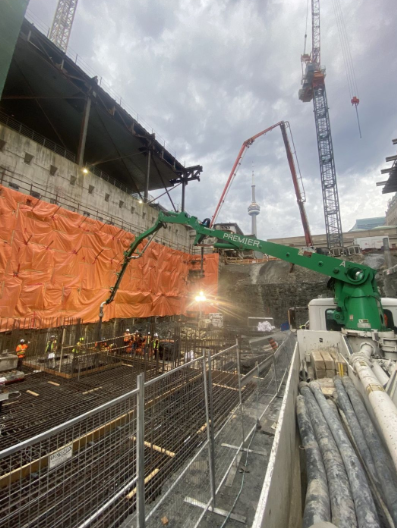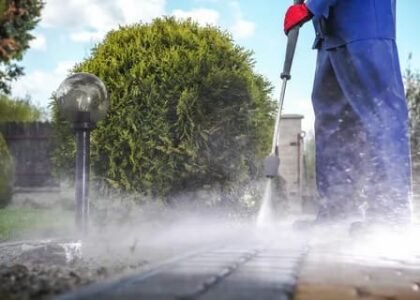Concrete pumping makes big jobs faster, easier, and cleaner. Whether you’re building a driveway, a warehouse floor, or a multi-story building, pumping helps you place concrete exactly where you need it without the hassle of moving it by wheelbarrow.
In South Eastern Ontario, many contractors and homeowners choose concrete pumping because it saves time and reduces labor. But even with the best pumping service, proper preparation is key. If your site is ready, the job will be smoother, safer, and more cost-efficient.
Here’s a step-by-step guide to getting ready for a successful concrete pumping project.
1. Understand What Concrete Pumping Involves
Before you start, it helps to know the basics. Concrete pumping uses a machine to move concrete from the truck to the exact spot where it’s needed.
There are two main types of pumps:
-
Boom pumps – These have a long, extendable arm. They’re great for reaching over obstacles or pumping to high places.
-
Line pumps – These use hoses laid along the ground. They’re ideal for smaller jobs or tight areas.
If you’re in South Eastern Ontario, local companies like Klaver Concrete can help you choose the right pump for your project based on your site and pour size.
2. Clear and Prepare the Site
A clean, open space makes work safer and faster. Before the pump truck arrives:
-
Remove any debris or loose materials.
-
Make sure vehicles can drive in and out easily.
-
Create a flat, stable area for the pump truck to park.
If your project is in a residential area, let neighbors know in advance. Pumping can be noisy, and trucks may block part of the street for a short time.
3. Plan for Safe Access
The pump truck and mixer trucks need enough room to get close to the work area. Check for:
-
Narrow driveways
-
Low-hanging wires
-
Overhanging trees
-
Soft ground that could cause heavy trucks to sink
In some parts of South Eastern Ontario, rural properties may have soft soil or steep slopes. You may need to add gravel or plywood sheets to create a safe path for trucks.
4. Know How Much Concrete You Need
Running short on concrete can cause delays and poor results. Ordering too much can waste money.
Your contractor or pumping service can help you measure the area and calculate the right volume. Concrete is sold by the cubic meter, so you’ll need accurate measurements of length, width, and depth.
It’s always smart to order a little extra to cover small mistakes or uneven ground.
5. Check the Weather
Concrete needs the right conditions to set well. In hot weather, it can dry too fast. In cold weather, it can freeze before curing.
In South Eastern Ontario, spring and fall are popular times for pumping projects because the temperature is moderate. If rain is in the forecast, have tarps or plastic sheets ready to cover the fresh pour.
6. Have Enough Workers Ready
Concrete pumping is fast. Once the concrete starts flowing, you need a team ready to spread and finish it right away.
For most projects, you’ll need:
-
Someone guiding the pump hose
-
People spreading the concrete evenly
-
Workers smoothing and finishing the surface
The pump operator controls the flow, but your crew needs to keep up to avoid delays or uneven surfaces.
7. Prepare for Clean-Up
When the pumping is done, the crew will clean the equipment and hoses. This creates wastewater that needs to be contained and disposed of properly.
Pick a safe spot where the pump operator can wash out without harming grass, gardens, or drains. Some areas in South Eastern Ontario have rules about where you can wash out concrete, so check local guidelines.
8. Talk to Your Pumping Company in Advance
Good communication can save you a lot of stress. A few days before the job:
-
Confirm the start time.
-
Double-check the mix type you’re ordering.
-
Ask about payment terms and what’s included.
If you’re working with a local team like Klaver Concrete, they can also give tips based on the season, weather, and your exact location in South Eastern Ontario.
9. Safety First
Concrete pumping uses heavy equipment under high pressure. Keep safety in mind:
-
Wear protective gear: gloves, boots, and eye protection.
-
Keep children and pets away from the work zone.
-
Listen to the pump operator’s instructions.
An organized, safety-focused job is faster, cleaner, and much less stressful.
10. Common Mistakes to Avoid
Here are a few things that can go wrong if you’re not ready:
-
Blocked access – Trucks can’t get close enough to pump.
-
Wrong mix – The concrete is too wet or too dry for pumping.
-
No crew ready – Concrete starts to set before it’s placed.
-
Bad weather plan – Rain or heat damages the fresh surface.
Planning ahead prevents these headaches.
Why Concrete Pumping Is Worth It in South Eastern Ontario
This method isn’t just for big construction sites. Homeowners and small businesses can benefit too. Pumping allows:
-
Faster pours with fewer workers
-
Less mess and damage to landscaping
-
The ability to reach hard-to-access spots
In areas like Kingston, Belleville, and Brockville, pumping is becoming the go-to choice for driveways, patios, foundations, and more.
Final Tips for a Smooth Project
-
Prepare your site before the trucks arrive.
-
Confirm all details with your pumping company.
-
Have your crew ready to work quickly.
-
Keep safety and clean-up in mind.
With the right planning, concrete pumping can be quick, clean, and cost-effective. Whether you’re building a home foundation or upgrading a commercial lot, being ready makes all the difference.
5 FAQs About Concrete Pumping South Eastern Ontario
1. How far can a concrete pump reach?
Boom pumps can reach over 30 meters vertically and even further horizontally. Line pumps can go hundreds of feet using hoses.
2. Can I pump concrete in winter?
Yes, but you’ll need a special mix and protection to prevent freezing. Local companies know how to handle winter pours.
3. How much does concrete pumping cost?
Prices vary by location, job size, and pump type. It’s best to get a quote from a local provider.
4. Is pumping better than using wheelbarrows?
Yes. Pumping is faster, cleaner, and reduces the need for heavy manual labor.
5. Do I need a permit for concrete pumping?
Usually, you don’t. But if the pump truck blocks a street, you may need a temporary permit from your city.






